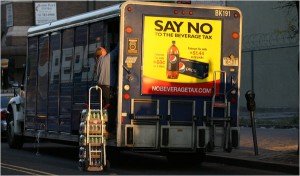Eating Liberally: What’s up with Walmart?
Every now and then I answer questions from Eating Liberally’s Kerry Trueman (kat). Today’s is about Walmart’s sustainability initiatives.
Let’s Ask Marion Nestle: Is Wal-Mart’s Sustainability Strategy For Real?
Submitted by KAT on Fri, 10/15/2010 – 12:20pm.
(With a click of her mouse, EatingLiberally’s Kerry Trueman corners Dr. Marion Nestle, NYU professor of nutrition and author of Pet Food Politics, What to Eat and Food Politics🙂
KT: Why do you think Wal-Mart has decided to throw its colossal weight behind sustainable agriculture, both domestically and globally, in such a seemingly significant way? Is it a strategic pr move, a better-for-the-bottom-line calculus, or a bit of both? Is it too good to be true?
Dr. Nestle: I, of course, am a skeptic. Of course Wal-Mart wants to get into the business of sustainably and locally grown food. Wal-Mart is the largest grocery chain in the world, the 800-pound gorilla in the industry. It can demand whatever it wants from its suppliers, and at the lowest possible cost.
With these new initiatives, Wal-Mart suppliers will have to figure out ways to produce foods sustainably–without increasing the cost to Wal-Mart. So this move costs Wal-Mart nothing. It gains plenty. This move should recruit supporters of sustainable and locally grown food and induce them to overlook the company’s retrogressive labor practices.
Will these initiatives help farmers? Maybe, but only if Wal-Mart pays them decently for what they produce. As for Wal-Mart employees? Ditto. But I want to wait and see how it all plays out before making a final judgment.
This is also posted on Huffington Post.
And the New York Times has a story on it.


